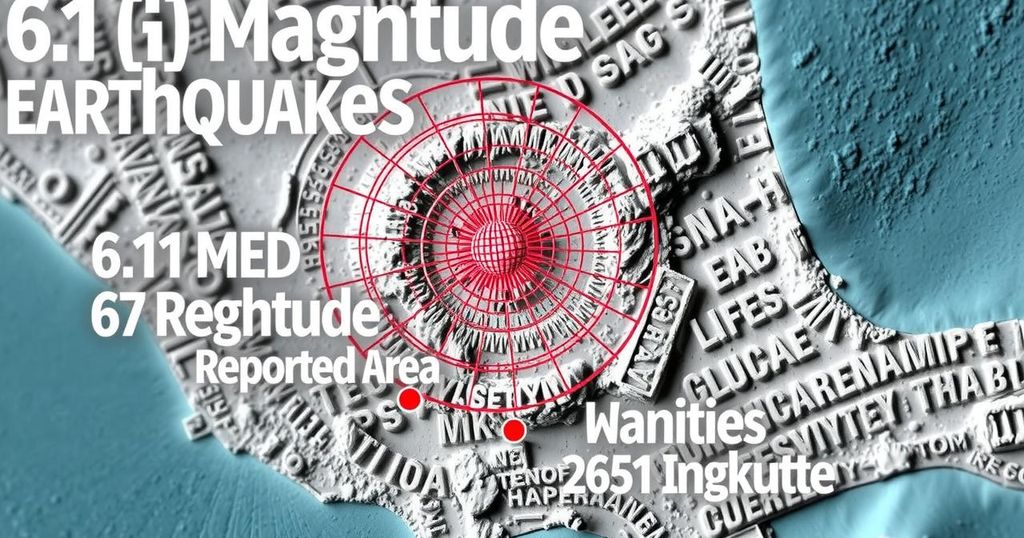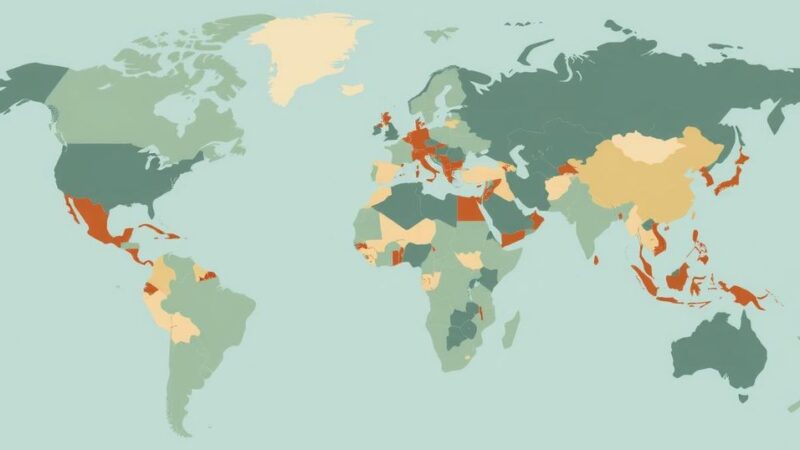A 6.1-magnitude earthquake struck Chile on January 2, 2023, according to the USGS, following multiple seismic events in California and Alaska. The report highlights significant earthquakes occurring within a few days of one another across various locations, indicating heightened activity in these regions.
On Thursday, January 2, 2023, a substantial 6.1-magnitude earthquake struck Chile, as reported by the United States Geological Survey (USGS). This seismic event was centered in Calama, located at a notable depth of 99 kilometers (approximately 61.5 miles). The USGS mentioned that it had received 25 reports from individuals who felt the tremors at the time of publication.
This earthquake in Chile followed closely after a 4.7-magnitude quake on January 1 in California, which was centered in Cobb at a shallow depth of 1.1 kilometers (around 0.7 miles). In the preceding days, Alaska experienced a sequence of seismic activities, including a 3.3-magnitude earthquake reported on December 30 in Nikolski and another 3.3-magnitude tremor in Fort Bidwell, California, on the same day.
The seismic activity does not stop there; the Fort Bidwell earthquake occurred just two days subsequent to a significant 6.7-magnitude tremor recorded in the Kuril Islands on December 27. This earthquake had a notable depth of 162.6 kilometers (approximately 101 miles). Moreover, a variety of tremors struck Alaska, with a 3.6-magnitude earthquake reported near McCarthy shortly after a 3.0-magnitude quake in Clayton, California.
In essence, this pattern illustrates a notable uptick in seismic activity across various regions, with significant earthquakes being reported in a relatively short timeframe. The seismic events throughout the Western Hemisphere are both a concern to local populations and a reminder of the earth’s geological volatility.
The recent string of earthquakes across different regions highlights significant geological activity, particularly in seismic hotspots such as Chile, California, and Alaska. Earthquakes are common occurrences in these areas due to their locations along tectonic plate boundaries. This article outlines a series of earthquakes, revealing how interconnected seismic events can be, with aftershocks and related quakes following the main shock. The USGS provides timely updates and data regarding these occurrences, making it a reliable source for earthquake-related information.
In conclusion, the series of earthquakes detailed in this report emphasizes the ongoing geological activity in various regions around the world, particularly the recent 6.1-magnitude earthquake in Chile. These seismic events, tracing back to earlier tremors in the United States and Cuba, exemplify the unpredictable nature of earthquakes and their potential impacts on communities. Continuous monitoring by organizations such as the USGS is vital for public safety in earthquake-prone areas.
Original Source: 985thecat.iheart.com






